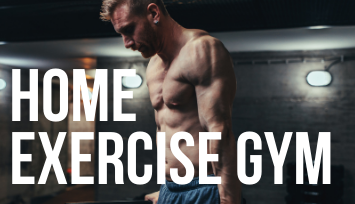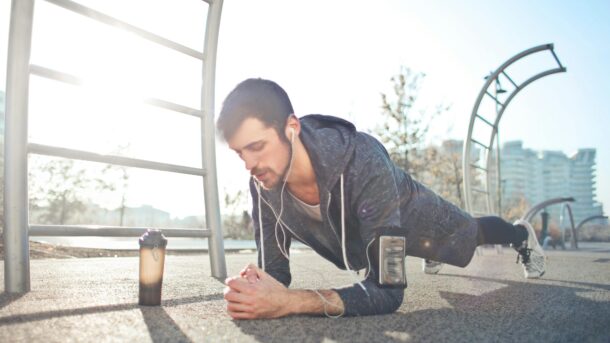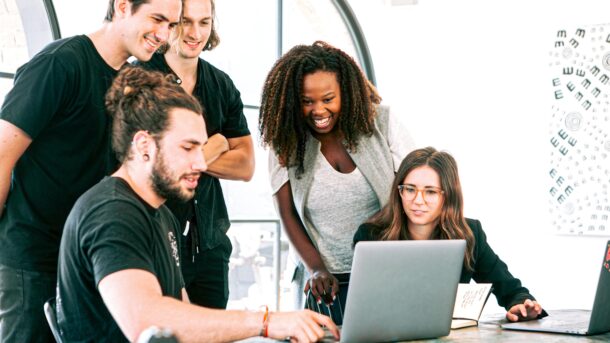Are you a working professional with a busy schedule? Are you looking to get more exercise in your day-to-day routine? Even a minimal amount can have a very positive impact on your overall health. Here is a list of options that are suitable for you (as a busy professional) and give you opportunities to incorporate more movement into your daily routine.
Here is a brief overview of the different options available to you for exercise!
Jumping Jacks
Jumping Jacks are an easy and fast full-body workout. They are great for building up bone density and strengthening hip muscles. Jumping jacks are a great way to start your day, and you’ll feel much better after a quick round of these!
Jumping jacks are a fantastic exercise for boosting overall cardiovascular health. As a classic aerobic activity, jumping jacks get your heart pumping and increase your breathing rate, making them one of the most effective ways to enhance your cardiovascular fitness. When you perform jumping jacks, your heart rate rises, allowing your body to deliver oxygen-rich blood more efficiently to every cell and tissue.
But the benefits of jumping jacks go far beyond just heart health. One often overlooked advantage is the positive impact on brain function. The vigorous, rhythmic movement involved in jumping jacks increases blood flow not only to your muscles but also to your brain. This enhanced circulation brings more oxygen and nutrients to brain cells, which can help improve focus, boost mental clarity, and elevate your mood. Aerobic exercise like jumping jacks has even been shown to stimulate the release of endorphins and brain-derived neurotrophic factor (BDNF)—a protein that supports learning, memory, and the growth of new brain cells. Regularly including jumping jacks in your workout routine can help reduce stress, sharpen your thinking, and support long-term brain health, making it a great addition to any quick home workout.
Arm Circles
Arm circles are a straightforward and efficient exercise that can be performed almost anywhere, requiring no special equipment. They are particularly beneficial for warming up the shoulders and improving flexibility.
How to Perform Arm Circles
According to Eskenazi Health, arm circles begin in a standing position shoulder-width apart and require simple forward and backward motions. Exercise of the Month: Arm Circles Looking for an added challenge? Consider adding light weights in each arm simultaneously!
Benefits of Arm Circles
Arm circles are not only easy to perform but also offer several benefits:
- Shoulder Strengthening: Regular practice helps in strengthening the shoulder muscles, which are crucial for daily activities like lifting groceries or performing household chores.
- Improved Flexibility: They aid in enhancing the flexibility of the shoulder joints, reducing the risk of injuries. Prolonged periods of sitting or low-activity can cause the shoulder joints to become stiff over time.
Incorporating Arm Circles into Your Routine
Given their simplicity and effectiveness, arm circles can be easily integrated into your daily routine:
- Warm-Up: Use them as a warm-up exercise before engaging in more strenuous physical activities.
- Part of a Comprehensive Workout: Combine them with other exercises to create a balanced workout regimen.
Incorporating arm circles into your daily activities can contribute to better shoulder health and overall physical well-being.
High Knees
High knees are a simple, accessible exercise that can be performed anywhere—making them a great choice for those looking to support knee strength and flexibility with no equipment required. This exercise involves lifting your knees alternately toward your chest in a marching or jogging motion.
According to Wikhow, 3 Ways to Do High Knees – wikiHow High knees begin in a standing position. The objective is to bring your knees as closely as possible to your chest. You have the option of varying speed and height.
Why High Knees Are Beneficial
- Strengthen Muscles Supporting the Knee: This movement activates the quadriceps, hip flexors, and calves—muscles crucial for stabilizing and supporting the knee joint (HSS Move Better).
- Improve Mobility and Balance: High knees promote dynamic flexibility and balance, key for knee health and injury prevention.
- Low-Barrier Cardio: As highlighted by the Virginia Cooperative Extension, they raise your heart rate, offering a cardio workout that also strengthens the legs.
Tips for Healthy Knees
- Start Slowly: If you’re new to exercise or have knee concerns, begin with a marching motion and focus on form over speed. Don’t worry too much initially about distance or speed – that will build up over time.
- Mind Your Range of Motion: Only lift your knees as high as is comfortable for you.
- Listen to Your Body: The Harvard Health guide recommends avoiding pain and focusing on gentle, controlled movements to support joint health.
Incorporation Into Your Routine
High knees can be performed as part of a warm-up, between strength exercises, or in short cardio bursts throughout the day. Aim for intervals of 20–30 seconds, resting as needed, and gradually increase your duration as your strength and endurance improve.
Squats
Squats are one of the most efficient full-body exercises you can do at home without any equipment, making them perfect for busy professionals. This classic move targets your lower body, primarily working your quadriceps, hamstrings, glutes, and even your core muscles for added stability.
Benefits:
The benefits of squats extend far beyond toned legs. Harvard Health highlights that squats strengthen the muscles that support the knees and hips, improving balance, mobility, and posture—crucial for anyone who spends long hours at a desk.
A basic squat is an easy exercise which begins in a standing position. With your chest up, you’ll want to lower the core of your body as close to the ground as possible, and return to a standing position.
Maintain a straight back throughout and avoid letting your knees move past your toes.
Duration:
This is completely up to you. For a quick home workout, aim for 2–3 sets of 12–15 reps, resting 30 seconds between sets. With proper form, this takes just a few minutes and can be integrated easily into your daily routine—no equipment, no fuss, just results.
Hip Circles
Hip circles are a dynamic, no-equipment exercise that builds hip strength, mobility, and stability—essential for busy professionals looking to stay active in tight schedules. American Sport and Fitness highlights ten key benefits, Top 10 Benefits of Hip Strengthening Exercises with Hip Circles including better posture and athletic performance.
How to
Hip circles are done from a standing position – simply move your hips in a circular motion! Hip Circles | Illustrated Exercise Guide
Incorporate hip circles into a 10-minute home routine as a warm-up exercise. Begin with 30 seconds in the clockwise direction, and 30 seconds in the counterclockwise direction. Ensure that you’re performing this at a comfortable pace. Give hip circles a spot in your daily routine—your hips, posture, and performance will thank you!
Try adding one or more of these exercises to your day-to-day routine! It’s important to incorporate exercise through your day-to-day activities, not just in dedicated workout sessions. Whether you’re at your desk, taking a short break, or winding down at home, these simple movements—jumping jacks, arm circles, high knees, squats, and hip circles—offer flexible options to fit into even the busiest schedule. By weaving short bursts of activity into your routine, you’ll not only boost your physical health but also improve your focus, energy levels, and overall well-being. Remember, the key is consistency: start small, choose exercises you enjoy, and gradually build them into daily habits. Over time, these quick exercises can make a significant difference—helping you feel stronger, more energetic, and better equipped to handle the demands of your professional life. Your health is an investment worth making, no matter how busy your day gets.






Recent Comments